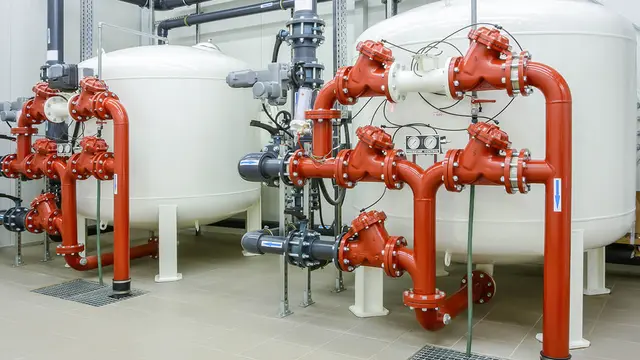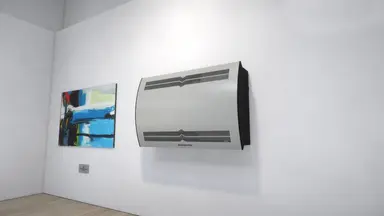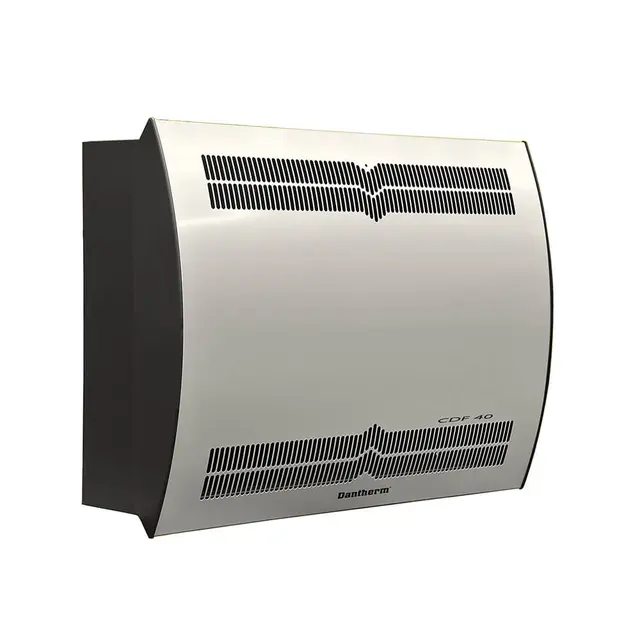The quick guide to dehumidification in waterworks

- Home
- Insights
- Humidity control and drying insights
- The quick guide to dehumidification in waterworks
In this article, we explain why humidity is one of the biggest challenges in maintaining machinery and equipment at waterworks. As well as discovering why moisture in the air has the potential to cause major problems, we share some expert advice on choosing the most appropriate dehumidification system.
By their very nature, waterworks will always create an environment with high humidity levels. However, if left unregulated, moisture in the atmosphere can result in structural damage to buildings, hygiene issues for staff, as well as rust and cracks appearing on tanks and pipework. In order to prevent these problems, relative humidity must remain at optimum levels in line with the temperature inside the facility.
Relative humidity (RH) is a percentage that tells us the amount of water vapour in the air, relative to the amount of water vapour that can be held at its current temperature. RH is directly linked to temperature because warm air can hold more moisture than cold air. For example, there will be more moisture in the air at 50% RH when the temperature is 25°C than there would be at 10°C.
When air rapidly cools, RH levels can reach 100%, or the ‘dew point’. This means that the air, at its current temperature, has reached its maximum water content and will release excess moisture in the form of condensation.
Why regulating relative humidity is so important
When a large amount of condensation is allowed to form, paint will peel off tanks and water pipes, leaving them vulnerable to corrosion.
As well as becoming a slip hazard and causing sensitive electronics to malfunction, damp surfaces can also create the perfect conditions for mould and mildew. As it spreads, mould will eat away at the building and release toxic spores into the atmosphere, posing a serious health risk to staff working at the facility.
During the summer months, humid environments can also allow mosquitoes to thrive. Aside from being particularly unpleasant for anyone in the area, mosquitoes often deposit their eggs in open water reservoirs, making it difficult for a facility to meet its strict hygiene standards.
How to keep humidity under control
The water temperature at a typical facility is usually between 6-9°C, meaning that the surface temperature of pipes is roughly the same. Preventing condensation relies on the dew point temperature staying below the surface temperature of the pipes. This can become a delicate balancing act.
Due to the cold water pipes and because part of the building is normally underground, average temperatures inside waterworks are rarely higher than 18°C. This means keeping relative humidity lower than 45% will help avoid condensation forming throughout the year.
Dantherm’s portable dehumidifiers play a crucial role in removing excess moisture from the atmosphere in facilities across Europe, ensuring that relative humidity remains at optimum levels.
The example below serves as a useful guide for selecting the most appropriate dehumidification solution.
In this example, we want to determine the dehumidification requirement of a waterworks facility with an air temperature of 15°C and a desired RH value 50% RH. The size of the waterworks is 300m³, the water surface is 40m² and the water temperature is 8°C.
The data: Volume of waterworks: |
300m3 |
Air change rate: | 0.3 pr. hour |
Water surface: | 40m2 |
Water temperature: | t = 6.8°C (and 100% RH) |
Water content in the air at water temperature: | xsa = 7g water/kg air (see hx-diagram) |
Outside condition: | t = 20°C and 68% RH > x2 = 10g water/kg air |
Desired condition: | t = 15°C and 50% RH > x1 = 5g water/kg air (see hx-diagram) |
The calculation:
W(water reservoir) | = | 6.25 * 40 * (7-5) = 500g water/hour |
W(ventilation) | = | ρ * V * n * (x1 -x2) = 1.2 * 300 * 0.3 * (10-5) = 540g water/hour |
W(total) | = | 500 + 540 = 1.04 ltr/hour |
The dew point temperature at 15°C and 50% RH is approximately 5°C according to the hx-diagram. This means that the surface temperature of the water pipes must drop below 5°C before condensation occurs on the pipes. If the temperature is 8°C, there will be no condensation of water on the pipes as the actual water temperature is higher than the dew point temperature.
Recommendation:
Two CDT 60 units. Capacity: 0.6 litre/hour per unit at 15°C/50% RH.
As we have seen it is extremely important to have full control of the relationship between temperature and RH value in this type of situation. To do so, we recommend that you equip each CDT 60 unit with a hygrostat set to 50% RH (see table 7) that automatically keeps temperature and humidity conditions at a level that prevents condensation.
Want to know more?
For more expert advice on preventing moisture damage in waterworks, or on selecting the right system for your facility, simply fill out the form below to get in touch with our team.
Related products
Featured insights

Save time and money on removing moisture from under the floors

Discover how to overcome the humidity challenges of preserving your artefacts
Need help with choosing the right solution? Our team of over 100 climate control experts can assist.
You can also reach out or join the discussion on our Social Media. Check out our LinkedIn page.
